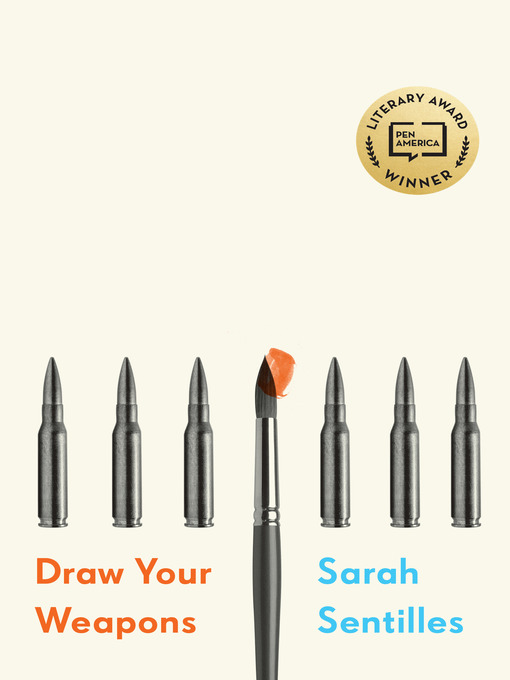
Draw Your Weapons
کتاب های مرتبط
- اطلاعات
- نقد و بررسی
- دیدگاه کاربران
نقد و بررسی

May 8, 2017
Sentilles (A Church of Her Own) delivers a learned, poetic, and interdisciplinary assessment of the ways in which the photographic image has been abused and weaponized, while also suggesting ways in which the arts can help serve as an antidote to this problem. Sentilles shows how, historically, a photograph (like memory itself) is surprisingly mutable and can be manipulated to eschew truth and dehumanize others. Staged studio-shot postcards of paid models, for example, helped French colonists in Algeria disseminate false perceptions of the country to people in France. Today, she points out, even war itself is waged directly through photographic imagery: drones fire missiles launched by operators thousands of miles away staring at real-time aerial imagery on their computer monitors. The technology is new, but the weaponization of aerial photography is as old as aerial photography itself. Discarding a linear narrative style, each chapter consists of a patchwork of very short anecdotes and meditative reflections on a wide array of seemingly disparate subjects—including Herodotus and quantum physics—that Sentilles invariably and deftly manages to string together. In one especially evocative juxtaposition, Sentilles interlays biblical passages about God’s all-seeing omniscience with a history of the development of drone technology. Approaching the topic with a prodigious ability to span disciplines and connect ideas, Sentilles addresses the need for the restoration of soul and feeling in a culture numbed by an overabundance of images mediated through television and computer screens.

May 15, 2017
A sometimes-scattered though always lyrical meditation on art and artists as witnesses to war, terror, and other dark hallmarks of our time.Imagine that the late Uruguayan writer Eduardo Galeano--quoted at points here--had taken an interest in art and its way of interpreting and resisting history, and you have at least a flavor for Sentilles' (Breaking Up with God, 2011, etc.) essayistic approach to some of the horrors of our time. Working through the art of one of her students, who had been stationed at Abu Ghraib, and through a conscientious objector in World War II who had been painting since youth, the author delivers small, apothegmatic pieces that sometimes approach prose poems and sometimes fit rather loosely in the narrative frame. While the statement "seventy percent of the earth is covered by water--our bodies made of nearly the same percentage" is surely true, it doesn't add materially to how we understand the form of torture known as waterboarding, the larger issue under discussion. Sometimes the author's refractive approach works very nicely, though, as when she observes that Stradivarius' violins were made from defective wood sold by the Turks to their sometime enemies, the Venetians, an example of art rising from war, albeit an indirect one. It is also worth remembering, as she does, that U.N. officials covered up a tapestry reproduction of Picasso's Guernica, on display at that body's headquarters, before Colin Powell delivered a speech making a case for war on Iraq in 2003. That war is destructive and displacing is well-known; that it yields accidental moments of beauty is, too, but Sentilles has a good eye for those arresting glints, for oddments such as the fact that the Japanese-American internment camp at Manzanar, California, was, in 1942, "the largest city between Los Angeles and Reno." The collage effect does not always serve the narrative well, but Sentilles offers plenty of facts and stories worth reading.
COPYRIGHT(2017) Kirkus Reviews, ALL RIGHTS RESERVED.

June 1, 2017
How to live in the face of so much suffering? How to respond to violence that feels as if it can't be stopped? What difference can one person make in this beautiful, imperfect, and imperiled world? Such are the questions from which art theorist and historian Senitilles launches her searching personal and professional reflections on how the art of photography and image-making can aide in healing a world at war or abetting and promoting its violence. Inspiring Sentilles are diametrically opposed photographs, one of a WWII conscientious objector celebrating his 87th birthday; the others, the notorious collection of torture and humiliation photographs from Abu Ghraib. Among these, she weaves the stories of WWII CO Howard Scott; Miles, her art student who also served as a guard at the Iraqi prison; and her own personal engagement with Howard and Miles. Throughout, she interrogates with erudite, critical acuity how artful photographic images can shape who we are and guide how we respond to the best and least in ourselves.(Reprinted with permission of Booklist, copyright 2017, American Library Association.)

























دیدگاه کاربران